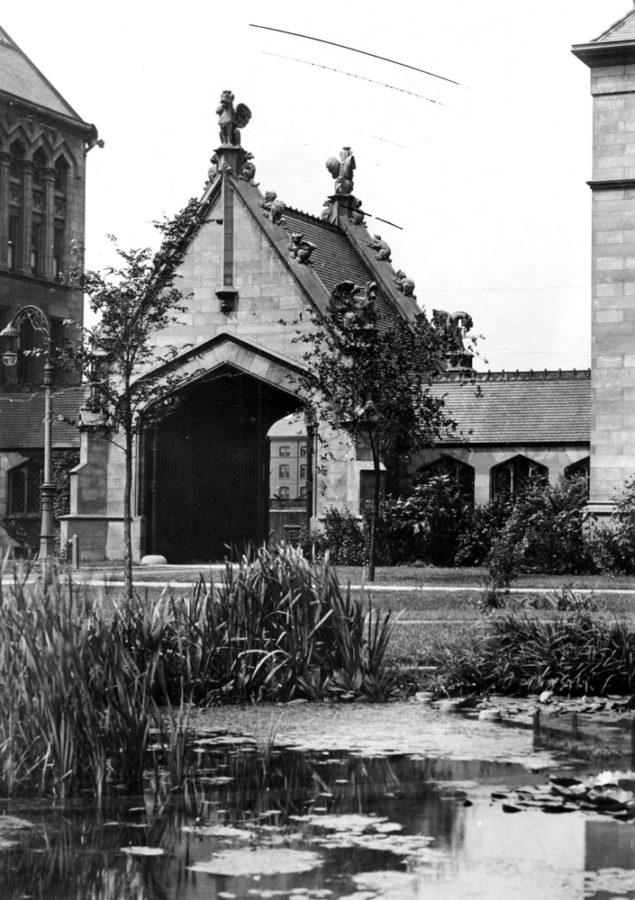Belonging to a city neighborhood in the bustling metropolis of Chicago is a lot like belonging to a small village. Chicago’s 50 wards, stretching over countless urban neighborhoods, individually comprise the sort of pseudo-autonomous Tocquevillian civic places so characteristic of early American development.
Replete with instances of individual enterprise, the wards attain a voice within the greater realm of city politics through their elected Aldermen–normal, non-career politicians, who, when not giving their all for the betterment of their communities and blazing the campaign trail, are to be found in completely ordinary places of occupation.
Fourth Ward Alderman Toni Preckwinkle–originally a history teacher–knows both ends of the civic spectrum. Hailing from Minnesota, she came to the University of Chicago as an undergraduate, quickly learned the political ropes through campaign work, and ran for Alderman on three different occasions before finally winning in 1991. Yesterday during a brief seminar on the second floor of Ida Noyes, she gave a bit of insight to students and community members on the challenges of running a long-neglected South Side ward.
“My colleagues are constantly asking me why development is always happening in my ward,” said Preckwinkle during the seminar. “Then I find myself asking them, ‘why aren’t things happening in yours?'”
Over the years, Preckwinkle has acquainted herself with Chicago’s longtime tradition of patronage politics, where brother-mother-sister-aunt connections can precipitate city contracts of all sorts. Although patronage politics declined during the 80s and 90s following the death of the original Mayor Richard Daley, his son, Richard II, still maintains iron-fisted control in the Windy City. For further proof, briefly examine Daley’s strong-armed nighttime dismantling of Meigs Airfield in early April, when bulldozers moved in under the cover of darkness to undertake the controversial demolition.
“My relationship with the mayor is off and on,” said Preckwinkle. “Sometimes he’s happy with me and sometimes he’s mad at me; right now, he’s mad at me.”
Sans microphone and sans flashy pompousness or overdone political correctness, Preckwinkle laid into Daley’s plan for residential development of her Fourth Ward, which stretches from 53rd Street to 26th Street and from King Drive to the Lakefront. Preckwinkle’s proposal had called for 20 percent of all new housing developments in her ward to be set aside for affordable or public housing. Daley chopped that number down to 10 percent, to be applicable only on city-owned land. Preckwinkle said she had the support of 20 other aldermen–mostly black and Hispanic–to pass amendments to Daley’s plan, five aldermen short of a majority.
Unlike the residential development in some city wards, Fourth Ward development has proceeded with a firm obligation to provide affordable housing to longtime residents. Preckwinkle attended the groundbreaking of the new Lakepark Crescent structures in the 4000-4200 blocks of Lake Park Boulevard, consisting of 490 units, half of which will be either affordable or public housing. The groundbreaking represented the culmination of a vicious struggle between the aldermen and a few isolated community groups–composed largely of newer, upper-middle-class black residents, incensed at the thought of having to share their space with “people of more modest lifestyles.”
Preckwinkle said the groups went so far as to bring a lawsuit against the city, though it was eventually defeated. She said it “really was a sobering reminder of the role of class in our society. Of the racial divide, I have been all too aware, but class divides within the black community were definitely a sobering reminder.”
Though knowing the inextricable linkages between her neighborhood and other South Side wards, Preckwinkle acknowledged the boundaries of her control and influence. The community of Woodlawn, just south of the University, while having a similar socioeconomic makeup to Preckwinkle’s ward, has experienced an influx of high-end townhouses and condominiums, with very little support for affordable housing. While not commenting directly on Woodlawn’s development, Preckwinkle provided a telling description of neighborhood autonomy.
“A ward in Chicago is a lot like a small fiefdom. While the leaders of the fiefdoms can be active within their own personal spaces, the boundaries of the wards are like moats separating one region from the other,” she said. “I don’t go sniffing around in others’ fiefdoms, and they stay out of mine.”






